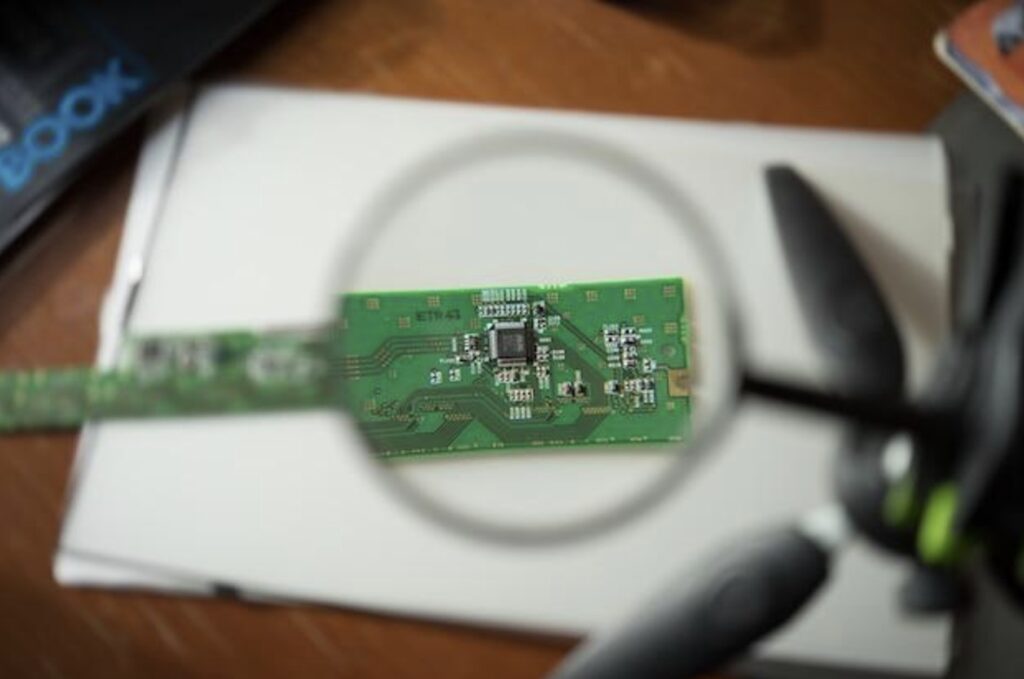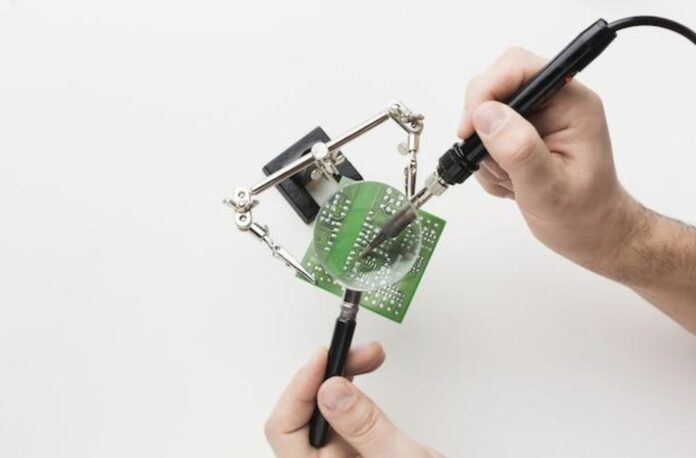Printed Circuit Boards (PCBs) are fundamental to modern electronics, serving as the backbone for connecting various components in devices ranging from smartphones to complex computing systems. One of the often-overlooked aspects of PCB design is the resistance of the traces that form the electrical pathways between these components. As technology progresses and circuits become faster and more powerful, understanding and controlling PCB trace resistance becomes increasingly important, especially in high-speed circuits. This article explores why PCB trace resistance matters, how it affects high-speed circuits, and the key considerations for PCB design and PCB prototyping.
What Is PCB Trace Resistance?
PCB trace resistance refers to the opposition to current flow that occurs within the traces of a printed circuit board. These traces are the copper pathways etched onto the board that carry electrical signals between different components. Resistance in these traces results from several factors, including the material properties of the copper used, the width of the trace, the thickness of the copper, and the length of the trace. At higher frequencies, trace resistance can have a significant impact on the performance of the circuit.
In high-speed circuits, the frequency of the signals passing through the traces is much higher, making trace resistance a critical factor that cannot be ignored. Even small resistive losses can cause signal degradation, leading to issues such as signal reflection, attenuation, or distortion. This is why understanding PCB trace resistance is essential for anyone involved in PCB design, particularly when working on high-speed or high-frequency applications.
The Role of PCB Trace Resistance in High-Speed Circuits
High-speed circuits are those that operate at frequencies ranging from hundreds of MHz to GHz and beyond. These circuits include components such as processors, memory, high-frequency transceivers, and high-speed digital systems. In these applications, the electrical signals travel at a significant fraction of the speed of light. The higher the frequency of the signal, the more susceptible it is to losses from various factors, including trace resistance.
In high-speed applications, PCB trace resistance directly impacts the following:
- Signal Integrity: Signal integrity is critical for high-speed circuits, and trace resistance plays a role in how clean and reliable the signal is. As resistance increases, the signal may be distorted or attenuated, which can lead to errors or data corruption. This is particularly problematic in high-speed data transmission systems, where even small distortions can cause significant performance degradation.
- Power Losses: As current flows through the traces, the resistance causes some of the electrical energy to be converted into heat. In high-speed circuits, where power dissipation is already a concern, additional power losses due to trace resistance can reduce the overall efficiency of the system.
- Signal Reflection and Impedance Matching: At high frequencies, signal reflections can occur when there is a mismatch between the characteristic impedance of the trace and the source or load impedance. PCB trace resistance is part of this impedance, and any variation in resistance along the trace can lead to reflections that distort the signal. Ensuring proper impedance matching is crucial for minimizing signal reflections and ensuring proper signal transmission.
- Rise Time and Propagation Delay: In high-speed circuits, the rise time of signals and propagation delay are key factors in determining the overall performance. The higher the trace resistance, the slower the signal transitions will be, leading to longer rise times and increased propagation delay. These delays can affect timing, synchronization, and the ability of the circuit to handle high-speed data.
- Electromagnetic Interference (EMI): High-speed signals can radiate electromagnetic energy, which can interfere with nearby circuits or even cause regulatory compliance issues. Higher trace resistance can exacerbate this problem by increasing the power dissipation in the traces, leading to increased EMI.
Factors Affecting PCB Trace Resistance
Several factors influence PCB trace resistance in high-speed circuits, including:
Copper Thickness:
Thicker copper traces have lower resistance because they provide a larger cross-sectional area for current to flow through. PCB prototyping often involves selecting the appropriate copper thickness based on the specific needs of the circuit. Standard copper thickness is typically 1 oz/ft², but for high-speed applications, thicker copper may be used to reduce trace resistance.
Trace Width:
The width of the trace also affects its resistance. Wider traces have lower resistance because they offer more surface area for current flow. In PCB design, engineers can adjust the width of the traces to balance resistance, space limitations, and other electrical requirements.
Trace Length:
Longer traces have higher resistance because the current has to travel a greater distance. Minimizing the length of traces in PCB design is crucial for reducing trace resistance, especially in high-speed circuits.
Copper Quality:
The quality of the copper used in PCBs can vary, and lower-quality copper can have higher resistivity, which increases trace resistance. High-grade copper is typically preferred for high-speed circuits to minimize losses.
Temperature:
Resistance increases with temperature. As the PCB operates, the traces can heat up, increasing their resistance and potentially affecting the performance of high-speed circuits. In applications where temperature is a concern, such as in automotive or industrial electronics, PCB prototyping must account for temperature-related variations in trace resistance.
Surface Roughness:
The surface finish of the copper traces also plays a role in trace resistance. A rougher surface increases the resistance because it creates more friction and less conductive contact between the trace and the current. This is why PCB manufacturers often use smooth copper finishes to minimize resistance.
Strategies for Reducing PCB Trace Resistance in High-Speed Circuits
To optimize PCB trace resistance in high-speed circuits, several strategies can be employed during the PCB design and PCB prototyping process:
Use Thicker Copper:
As mentioned earlier, using thicker copper in the traces reduces resistance. For high-speed circuits, PCB prototyping with 2 oz/ft² or even 3 oz/ft² copper can help lower resistance and improve overall performance.
Increase Trace Width:
Increasing the width of the traces is an effective way to reduce resistance. However, there is a trade-off, as wider traces take up more space on the board, which may be a constraint in high-density designs.
Minimize Trace Length:
One of the most effective ways to reduce resistance is to minimize the length of the traces. Shorter traces reduce the overall resistance and minimize the impact of parasitic inductance and capacitance on signal integrity.
Use Proper Impedance Matching:
Ensuring that the characteristic impedance of the traces is matched to the source and load impedances is critical for minimizing reflections. PCB designers should carefully calculate the required trace width, spacing, and layer stack-up to achieve proper impedance matching, particularly in high-speed circuits.
Optimize Layer Stack-Up:
For high-speed circuits, multi-layer PCBs can help reduce the trace length and improve impedance control. By strategically placing power and ground planes, designers can improve signal integrity and reduce trace resistance.
Improve Copper Quality:
Use high-quality copper with low resistivity to reduce trace resistance. Additionally, choosing a smooth surface finish for the copper traces can reduce friction and improve conductivity.
Thermal Management:
In high-speed circuits, managing heat dissipation is essential to prevent temperature-induced resistance changes. Thermal vias and heat sinks can be employed to dissipate heat effectively and maintain stable resistance levels.

Conclusion
PCB trace resistance is a critical factor in the performance of high-speed circuits. As signal frequencies increase, even small resistive losses can lead to significant issues such as signal degradation, increased power losses, and timing errors. Understanding the factors that contribute to PCB trace resistance and employing strategies to minimize it is essential for achieving optimal signal integrity and circuit performance. Whether through careful PCB design, selecting the right copper thickness, or optimizing trace widths and lengths, reducing trace resistance ensures that high-speed circuits can operate at their best. Effective PCB prototyping and testing also help verify the performance of these designs, ensuring that trace resistance does not become a bottleneck in achieving high-speed circuit goals.
